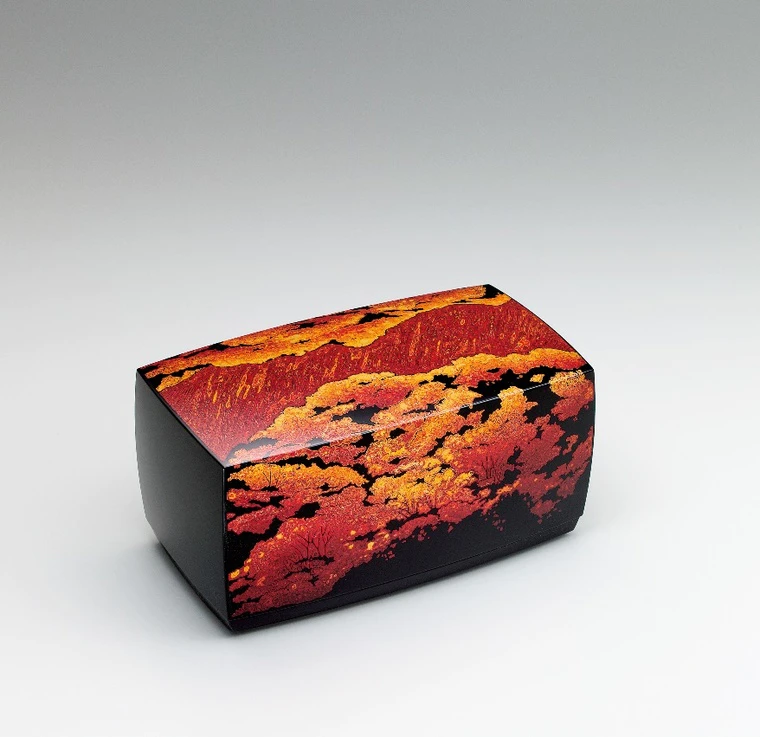Kanshitsu Box with Kinma "Mountain with Autumn Leaves Glowing in the Setting Sun"
- Lacquerware
- Price Range Please Inquire
- Awards at Japan Kōgei Assoc. Exhibitions : 12
Description
-
CategoryLacquerware
Techniques Used
Dry lacquer
For works of dry lacquer (kanshitsu), first a clay form is created and plaster is used to take a mold of the form. Next, repeated layers of hemp cloth and lacquer are applied to the mold until they are built up to the desired thickness. Finally, the mold is removed and additional coats of lacquer are applied to finish the piece. The hemp fibers are strengthened when the lacquer bonds with them, making dry lacquer an excellent technique for creating sturdy forms with a significant degree of freedom.
Kinma
There are three basic variations of kinma based on the method used for cutting the motifs: line cutting, dot cutting, and a combination of the two. All three types use a special carving blade known as a kinma ken. Originally, kinma only consisted of motifs made of incised lines. However, by combining a variety of colored lacquers and cutting techniques, the art has lent itself to increasingly complex designs.
Please feel free to contact us to commission work, check artworks available for purchase etc.


